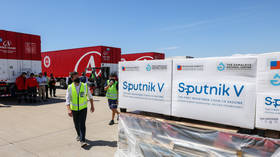
A bust of 19th century Australian cricketer Johnny Mullagh is seen at a park in Cootamundra, Australia. File Photo by Doug Butler/Wikimedia Commons
Dec. 28 (UPI) -- Johnny Mullagh, a star for Australia's pioneering 1868 all-Aboriginal cricket team, was selected Monday as the first Aboriginal member of the country's Cricket Hall of Fame.
Born Unaarrimin, Mullagh is hailed as one of the top cricketers of the Victorian Era and the best player on a groundbreaking all-Aboriginal cricket tour of Britain -- the first Australian squad of any sport to tour internationally, noted Australian Cricket Hall of Fame Chairman Peter King.
"Johnny Mullagh and the 1868 Aboriginal team paved the way for so many future Australians to showcase their skill and talent on the world stage," King said.
"To consider the team's feats were in an era dictated by inequality, makes their story even more remarkable and worthy of recognition."
Mullagh played in 45 of the team's 47 matches during the inaugural tour, taking 245 wickets at 10 and scoring 1698 runs at 23.65.
Before the British tour, Mullagh played in the third match ever scheduled at the Melbourne Cricket Ground, held on Boxing Day in 1866 between his team, called the Aboriginal and T. W. Wills Eleven, and the Melbourne Cricket Club.
In the historic contest, he was the team's highest runs scorer in both innings, with scores of 14 and 33.
RELATED Chanel accused of appropriating Aboriginal culture with $1,325 boomerang
"His story is an important one for all Australians because it tells of the huge contribution Johnny made to Australian sport in a time of grave inequality and discrimination," said Australian Cricketers' Association Interim CEO Joe Connellan.
"Hopefully this honour serves to tell Johnny's Mullagh's largely untold story."
Mullagh will be officially honored at the Cricket Australia awards night in February.
"His story is an important one for all Australians because it tells of the huge contribution Johnny made to Australian sport in a time of grave inequality and discrimination," said Australian Cricketers' Association Interim CEO Joe Connellan.
"Hopefully this honour serves to tell Johnny's Mullagh's largely untold story."
Mullagh will be officially honored at the Cricket Australia awards night in February.







